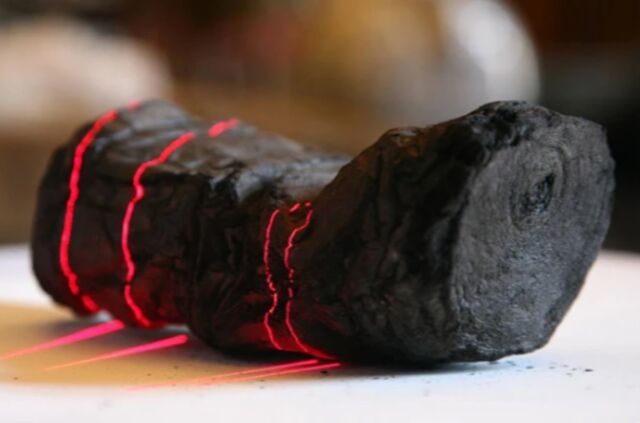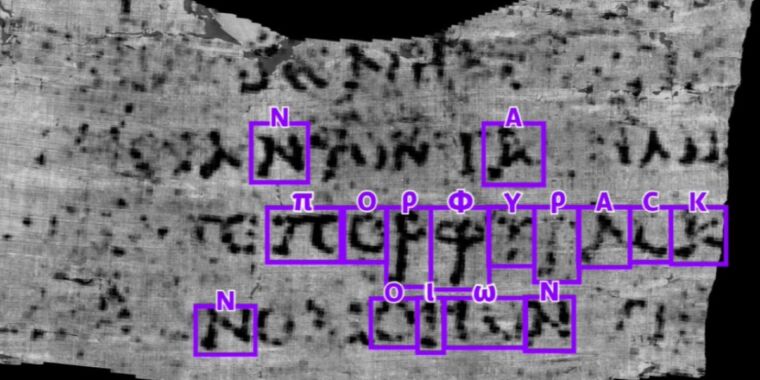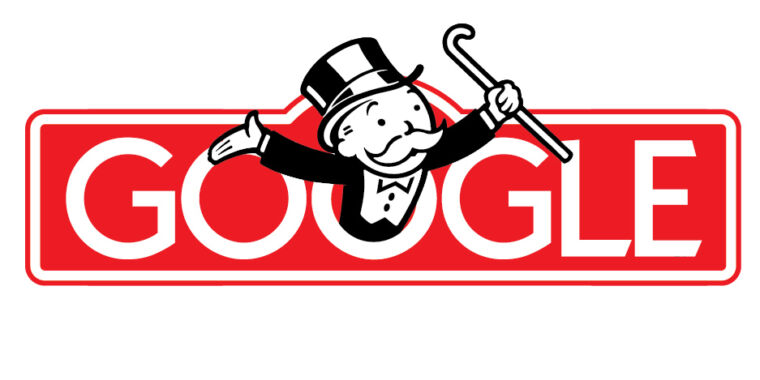
Vesuvius Challenge/University of Kentucky
Hundreds of badly charred ancient Roman scrolls found in a Roman villa have long been believed to be unreadable, but a 21-year-old computer science student at the University of Nebraska-Lincoln has successfully read the first text hidden within one of the rolled-up scrolls using a machine learning model. The achievement snagged Luke Farritor a $40,000 First Letters prize from the Vesuvius Challenge, a collaboration between private entrepreneurs and academics offering a series of rewards for milestones in deciphering the scrolls.
A second contestant, Youssef Nader, received a smaller $10,000 First Ink prize for essentially being the second person to decipher letters in a scroll. The main prize of $700,000 will be awarded to the first person to read four or more passages from one of the scrolls by December 31, and the founders are optimistic that this goal is achievable in light of these most recent breakthroughs.
As previously reported, the ancient Roman resort town Pompeii wasn’t the only city destroyed in the catastrophic 79 AD eruption of Mount Vesuvius. Several other cities in the area, including the wealthy enclave of Herculaneum, were fried by clouds of hot gas called pyroclastic pulses and flows. But still, some remnants of Roman wealth survived. One palatial residence in Herculaneum—believed to have once belonged to a man named Piso —contained hundreds of priceless written scrolls made from papyrus, singed into carbon by volcanic gas.
The scrolls stayed buried under volcanic mud until they were excavated in the 1700s from a single room that archaeologists believe held the personal working library of an Epicurean philosopher named Philodemus. There may be even more scrolls still buried on the as-yet-unexcavated lower floors of the villa. The few opened fragments helped scholars identify a variety of Greek philosophical texts, including On Nature by Epicurious and several by Philodemus himself, as well as a handful of Latin works. But the more than 600 rolled-up scrolls were so fragile that it was long believed they would never be readable since even touching them could cause them to crumble.

EduceLab/University of Kentucky
“This was a cultivated Roman aristocrat’s country villa, and Piso would have had lots of books there, especially Latin ones, of which so far very few have been found in the villa,” Robert Fowler, a classicist and papyrus expert at the University of Bristol in England, told The New York Times. “Recovering such a library would transform our knowledge of the ancient world in ways we can hardly imagine. The impact could be as great as the rediscovery of manuscripts during the Renaissance.”
Scientists have brought all manner of cutting-edge tools to bear on deciphering badly damaged ancient texts like the Herculaneum scrolls. For instance, in 2019, German scientists used a combination of physics techniques (synchrotron radiation, infrared spectroscopy, and X-ray fluorescence) to virtually “unfold” an ancient Egyptian papyrus. Their analysis revealed that a seemingly blank patch on the papyrus actually contained characters written in what had become “invisible ink” after centuries of exposure to light.
Brent Searles’ lab at the University of Kentucky has been working on deciphering the Herculaneum scrolls for many years. He employs a different method of “virtually unrolling” damaged scrolls, which he used in 2016 to “open” a scroll found on the western shore of the Dead Sea, revealing the first few verses from the book of Leviticus. The so-called En Gedi scroll was recovered from the ark of an ancient synagogue destroyed by fire around 600 CE. To the naked eye, it resembled a small lump of charcoal, so fragile that there was no safe way to analyze the contents.








